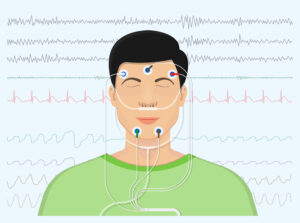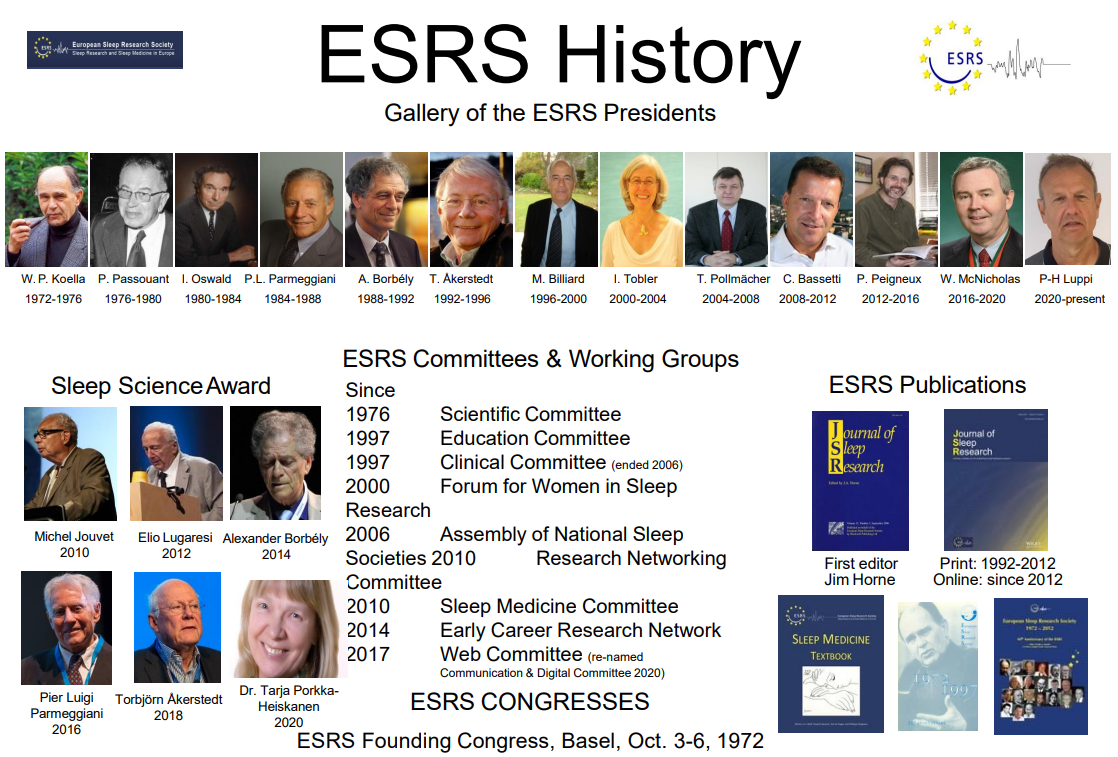Time for a Sleep Revolution (#H2020) with Dr. Erna Sif Arnardóttir
It’s the end of another week—grab a coffee/tea/beer/wine and end your week with a quick recap of Sleep Science News!
Last month, the European Commission announced the recipients of the Euro Horizon 2020 (#H2020) grants. We are happy to congratulate Dr. Erna Sif Arnardóttir (Assistant Professor at Reykjavik University’s Department of Engineering and Department of Computer Science and ESRS Secretary) and her colleagues who were awarded a 15-million Euro grant for their project Sleep Revolution.
Sleep Revolution aims to develop novel sleep diagnostics techniques to better assess the severity of sleep-disordered breathing (e.g., snoring and sleep apnea) to create improved personalized health care using digital diagnostics and patient participatory involvement.
Patients with sleep-disordered breathing (SDB) are at an overall higher risk for cardiovascular disease, hypertension, chronic pain, stroke, and diabetes (Athar et al. 2020, Lombardi et al. 2020). Additionally, SDB may lead to insomnia, which is often comorbid with mood disorders (Stelzer et al. 2020)—highlighting the importance of improved patient diagnostics and treatment.
Today, we were able to talk with Dr. Arnardóttir about Sleep Revolution, SDB, the importance of patient participation and feedback in the development of healthcare needs, and how to get involved as a young scientist.
Audio Only
Summary
0:00 – Introduction
1:03 – Overview and diagnosis of sleep-disordered breathing
Dr. Arnardóttir discusses current issues in diagnosing SDB and how Sleep Revolution aims to address this. The current diagnostic criteria of sleep apnea is measured using the apnoea-hypopnea index (AHI), which is the number of breathing cessations (apneas) and breathing reductions (hypopneas) per hour of sleep. However, the AHI may be too simplistic as it does not consider the length of apneas or hypopneas—limiting estimation on SDB severity.
“We need to use machine learning opportunities, signal processing, and all these tools we have to do much better. But to change diagnostic criteria is, of course, very demanding and the medical sciences are conservative for a reason. You can’t just say the AHI is bad, we need something better and to explain what that better is.”
Sleep Revolution will therefore analyze over 30,000 sleep recordings from across Europe, combined with data on other patient conditions and symptoms (e.g., cardiovascular disease, diabetes) to develop an additional index and validate this in prospective studies across Europe.
4:06 – Sleep Revolution timeline over the next 4 years
Sleep Revolution is set to start in early 2021, building a retrospective database to develop novel diagnostic techniques. In 2023-4, they will perform prospective studies to validate new indices and severity markers of sleep apnea.
Sleep Revolution also aims to objectively measure snoring (and not just the cessation of breathing) to see whether snoring has an effect on sleep quality. Studies will be performed across three nights, rather than just one, to get a better overview of the patient’s sleep variability.
6:00 – Patient diagnostics and home-testing
 Rather than in a sleep lab, patients will be able to bring the equipment home with a self-applied polysomnography to measure their sleep quality.
Rather than in a sleep lab, patients will be able to bring the equipment home with a self-applied polysomnography to measure their sleep quality.
6:35 – Sleep Revolution focuses on adults (for now)
While the scope of the project currently focuses on adults, they hope that the information from these studies can be applied to children in the future. Snoring is a huge problem in children and is correlated with negative consequences, including higher aggression, lower grades, and ADHD. However, more objective measurements are needed to see when snoring and other SDB are dangerous, when it’s harmless, and when it requires treatment.
7:44 – Sleep-disordered breathing in men versus women
Dr. Arnardóttir discusses the different profiles of men and women. Women appear to have more hypopneas and may snore less loudly and less often; however, there needs to be more objective studies to confirm this as snoring may be underreported in women.
The diagnostic criteria of SDB were also designed for men, with women displaying different profiles. Consequently, women are less likely to be diagnosed and less likely to receive treatment. Sleep Revolution aims to address this by having a very specific focus on gender and to ensure enough women are included in the studies.
9:35 – Sleep Revolution and the 4 P’s of Medicine
Dr. Arnardóttir and her colleagues aim to develop and provide personalized therapy for patients.
“It’s called 4 P medicine—which is a term I really like—and the 4 P’s stand for Predict, Prevent, Personalized, and Participatory.”
One of the main goals is to predict who will develop severe sleep apnea in the future to preemptively prevent the development of other comorbid conditions and improve overall health and well-being.
Sleep Revolution will develop a lifestyle program using a digital platform. To achieve this, Sleep Revolution consists of a highly interdisciplinary group, working with engineers, computer scientists, sport scientists, psychologists, and biologists. Patients will have a personalized exercise program and fill out an online sleep diary and sleep questionnaire. This allows patients, researchers, and medical professionals to track whether the program is working, if they are actually feeling and performing better, and to make any changes when necessary.
Patients will be able to track their own sleep study, listen to their own snores, and even track oxygen saturation levels using smartwatches. This allows active patient participation in the development of their own treatment plan. Therefore, patient reported outcomes are a large focus of the project.
15:22 – Science is better together: Sleep Revolution collaborators
Sleep Revolution will work with 37 collaborators (including ESRS) across 16 countries in Europe, along with a collaborator in Australia. The European Respiratory Society is also a supporting informal partner.
“We have all the stakeholders we need to make actual changes. So, our plan is in 4 years, we will have changed the way we do sleep medicine in Europe and hopefully then, worldwide. So that’s why we called the project Sleep Revolution. It’s not a small aim we have…I think we will be able to make real changes and that after 4 years, people can actually start using…and start changing the way they do diagnostics in the real world, because we really need that. There is a big call to change the way we do things.”
17:33 – For patients with sleep-disordered breathing
Sleep Revolution will connect with patient organizations. Dr. Arnardóttir believes that patient feedback is key in developing new healthcare technologies and improving treatment. The digital management platform allows patient to see their own data and share it with other healthcare providers.
If someone would like to be in the study, there will be advertisements when prospective studies begin.
19:10 – Future of patient participation in healthcare
Dr. Arnardóttir stresses the importance of working with patients.
“It’s something we have to consider for all future medicine…I really enjoy this 4 P concept and participatory is one of the big goal posts of that…it has to be participatory and we have to get their feedback because there’s no way for me to know if [they like it and if it is working].”
20:10 – Advice for young sleep scientists: get involved!
Dr. Arnardóttir encourages young scientists to not feel intimidated at conferences, to step outside of their comfort zone and approach others, including more senior scientists. In general, she says people are happy to discuss science regardless of seniority. Additionally, she encourages those who are really interested in making a difference to become active in your university, national sleep societies, and of course, the ESRS (and ESRS Early Career Researcher Network!)
24:45-25:55 – The role of the ESRS and final comments
Sleep Revolution is supported by the ESRS, with previous ESRS President Walter McNicholas directing one of the work packages within the project.
“It tells you that the ESRS is willing to go the extra mile and...that the ESRS is very dedicated to make the changes we think are needed in sleep medicine. So, if people are thinking along these lines, they should contact the ESRS and see if we can work together.”
Thank you again Dr. Arnardóttir for taking the time to discuss Sleep Revolution—we look forward to following the project and seeing all the changes that will be made to improve people’s health.
Have a great weekend everyone—stay safe and don’t be afraid to tell your partner/roommate/friend if they snore!
Similar articles on sleep-disordered breathing (past SSFs)
- Sleep-disordered breathing (3 Sept 2020)
Additional reading on sleep-disordered breathing from ESRS members
- Álvarez et al. 2020 A machine learning-based test for adult sleep apnoea screening at home using oximetry and airflow
- Athar et al. 2020 Obstructive Sleep Apnea and Pain Intensity in Young Adults
- Bailly et al. 2020* Clusters of sleep apnoea phenotypes: A large pan‐European study from the European Sleep Apnoea Database (ESADA)
- Constanzo 2020 Central Sleep Apnea in Patients with Heart Failure-How to Screen, How to Treat
- Gerstenslager & Slowik 2020 Sleep Study
- Goldstein et al. 2020 Artificial intelligence in sleep medicine: background and implications for clinicians
- Hajipour et al. (2020) Acoustic characterization of upper airway variations from wakefulness to sleep with respect to obstructive sleep apnea
- Hajipour et al. 2020 A comparison of regularized logistic regression and random forest machine learning models for daytime diagnosis of obstructive sleep apnea
- Hill et al. 2020* Prospective Trial of CPAP in Community-Dwelling Adults with Down Syndrome and Obstructive Sleep Apnea Syndrome
- Li et al. 2020 Sleep duration and risk of cardiovascular events: The SAVE study
- Lombardi et al. 2020* Nocturnal Arrhythmias and Heart‐Rate Swings in Patients With Obstructive Sleep Apnea Syndrome Treated With Beta Blockers*
- Miller & Cappuccio 2020 A systematic review of COVID-19 and obstructive sleep apnoea
- Pan et al. 2020 The Effect of Obstructive Sleep Apnea on Absolute Risk of Central Serous Chorioretinopathy
- Stelzer et al. 2020 Prevalence of chronic insomnia in patients with obstructive sleep apnea
- Wang et al. 2020 Therapeutic effects of CPAP on cognitive impairments associated with OSA
- Moreno-Pino et al. 2019 Validation of Fitbit Charge 2 and Fitbit Alta HR Against Polysomnography for Assessing Sleep in Adults With Obstructive Sleep Apnea
Just published an article? Want your research to be featured?
Saw something interesting?
Not an ESRS member yet? Apply here and see our wide range of benefits, including a yearly online subscription to the Journal of Sleep Research, automatic membership to the Federation of European Neuroscience Societies (FENS), support for early career researchers via the ECRN, regular updates via the ESRS Newsletter, promotion of your research, and more.



